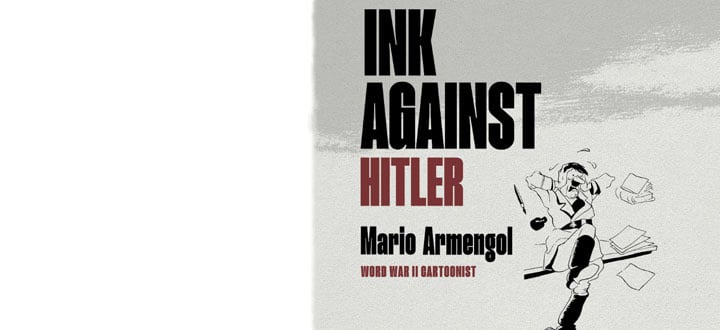A recovered biography
Francisco Paradaltas y Pintó (1808-1887) was born in Barcelona in the busom of a family of silversmiths, the son of an artisan who admire France and that worked in the opening of the Barcelona mint during the Napoleonic occupation. This family context determined Paradaltas' future, because he studied in France and, upon his return, was vetted with success as a master silversmith and obtained the official title of metals assayer.
The premature death of his parent brought about a search for a professional pathway that led him away from the family shop on the silversmiths street. He began to work as assayer for the Barcelona City Council in the reopened mint, and also joined two influential bodies with which he would be linked for the rest of his life: one was the Real Academia de Ciencias y Artes de Barcelona (Royal Academy of Sciences and Arts of Barcelona) of which he was an academician and docent, and finally president; and the other, the Sociedad Económica Barcelonesa de Amigos del País (the Barcelona Economic Society of Friends of the Country), of which he was one of the first members in its second stage of development.
Preserved in the National Museum, a small collection of this man's personal documents, as important in monetary material as it is sadly forgotten, has brought to life a revival of his biography among the outstanding group of Catalan businessmen who were protagonists of the Industrial Revolution during the reign of Isabel II (1833-1868).
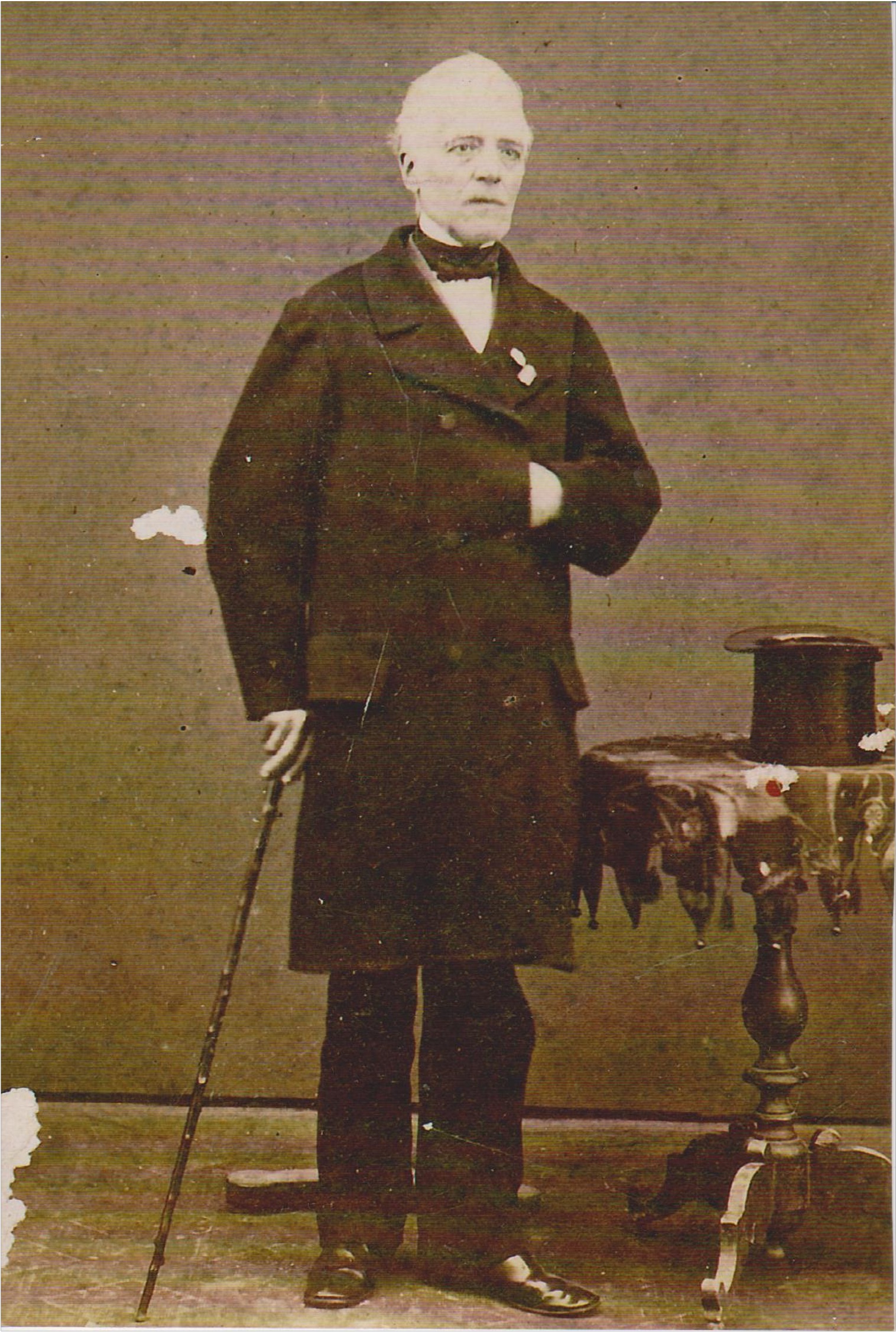
Francisco Paradaltas y Pintó. Barcelona, 1887. Alabau's family archive
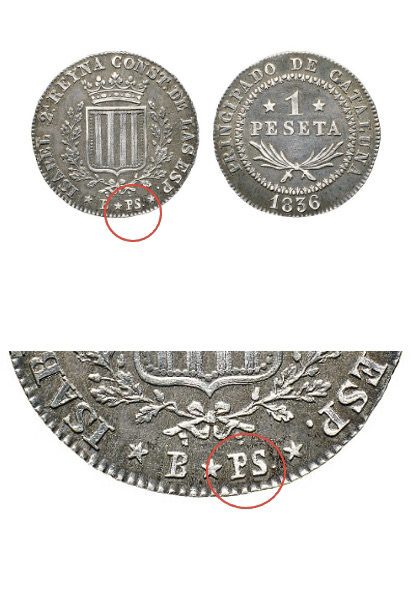
The initial “P” of Paradaltas, one of the two assayers of the Barcelona mint, appears on this peseta of Barcelona of Isabel II, from 1836. Museu Nacional d’Art de Catalunya. You can find more information in the online collection.
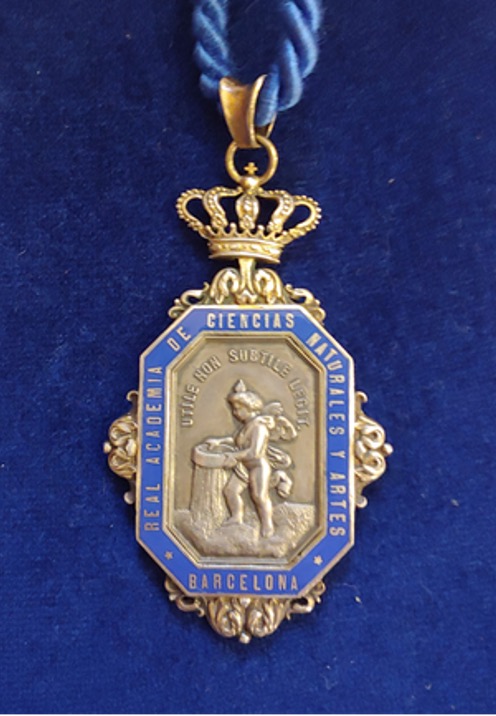
Obverse of medal nº 1 of the Real Academia de Ciencias y Artes de Barcelona, of which Paradaltas was its first holder. Reial Acadèmia de Ciències i Arts de Barcelona. Photo: Albert Estrada-Rius.
(Not exhibited)
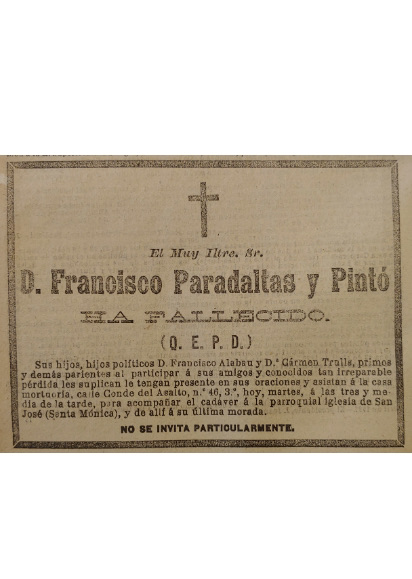
Obituary of Francisco Paradaltas in the Diario de Barcelona, 1887. Arxiu Històric de la Ciutat de Barcelona.



